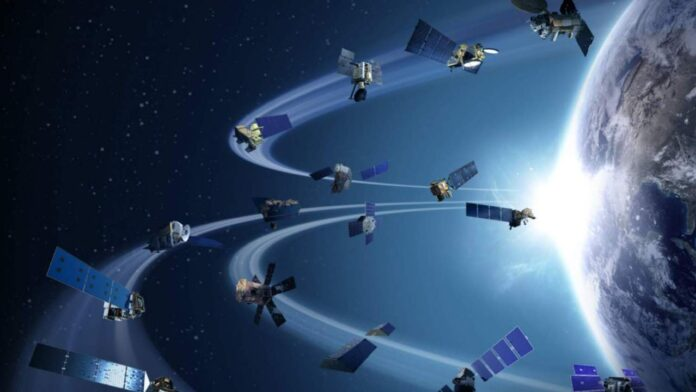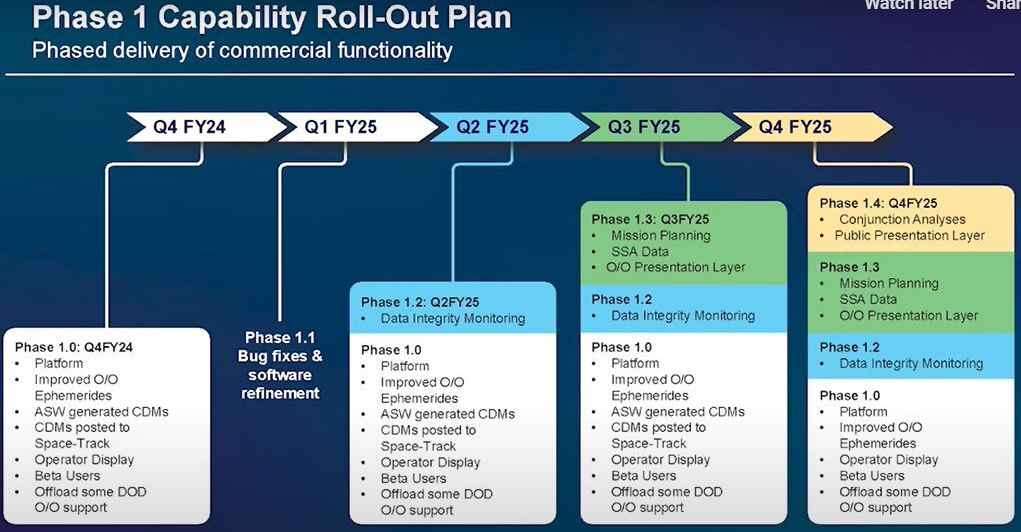TraCSS: The US Space Debris Tracking System Goes To the First Development Stage
4th Aug 2023
A new system that will support the tracking of space debris and objects in the US is progressing towards phase one of development. The Office of Space Commerce (OSC) shared the update on 28th July. The new system, called The Traffic Coordination System for Space, or TraCSS, is intended to provide free satellite tracking data to private and civil space satellite owners and operators (O/O). TraCSS is set to complete its first phase by the fourth quarter of the 2025 financial year.
What is TraCSS?
The original tracking service was run by the Department of Defense (DoD), under an ‘Open Architecture Data Repository’. The new TraCSS system will take that capability out of the DoD’s hands. TraCSS will utilize the DoD’s data as a base layer while leveraging modern technology, such as cloud computing and application programming interfaces, to provide satellite operators and owners with information about nearby objects or potential collisions. It is aimed at improving current Space Situational Awareness (SSA) systems already in place.
“TraCSS will provide basic SSA data and services to support civil and commercial satellite owners/operators,” said Travis Langster, Principal Director, Space and Missile Defense Policy from the Department of Defense in the video update.
“This transition will allow the USG (United States Congress) to better address SSA needs of commercial and satellite operators and it will allow the DoD to focus on critical missions to make our nation more secure, both in its endeavours in space, and here on Earth”.
There are three components involved in TraCSS, called Oasis, Skyline, and Horizon. Oasis will form the data lake for storing, sharing, and disseminating government international, and commercial SSA data. Skyline is the SSA application layer providing collision alerts and warnings. Lastly, Horizon is an R&D program run by NASA focused on developing future products and services.
What’s been happening so far?
In the latest update, the OSC revealed the rollout plans of Phase 1 for developing TraCSS. According to Sandy Magnus, chief engineer of TraCSS from the OSC, “Phase One is all about the on-orbit collision avoidance calculations and producing conjunction data messages (CDMs)”. CDMs are used to emit warnings to satellite operators and owners of orbiting objects nearby.
Phase 1.0 will begin in the fourth quarter of this year, and is focused on creating the TraCSS platform, improving O/O ephemerides, offloading O/O support from the DoD, and posting CDMs on SpaceTrack.org. The following parts of the roll-out can be seen in the below image.

Source: OSC
Changes made from the January RFI
In January, the OSC issued a Request for Information (RFI) to commercial SSA providers to garner feedback on how the new system could be best used. According to Magnus, a large portion of the feedback was concerned about whether the DoD services would be discontinued amid the development of TraCSS. Magnus asserted that the new system would “not disturb current operations” and the OSC would focus on allowing users to “get comfortable” with the new portal.
Further, Magnus said the OSC will create a program for engaging with the commercial sector to hear consistent feedback about TraCSS, and therefore aim to improve its quality.
Lastly, TraCSS will produce CDMs twice as often as the DOD did, transitioning to launch collision avoidance screenings every four hours instead of eight. Magnus said this was a “very strong desire” from the RFI feedback.
The video update can be watched here.


![Voyager 2 Loses Contact With NASA After Command Error [Updated] Voyager 2 Loses Contact With NASA After Command Error [Updated]](https://orbitaltoday.com/wp-content/uploads/2023/08/NASA-Voyager-the-Explorer-300x216.webp)




Thank you for your comment! It will be visible on the site after moderation.